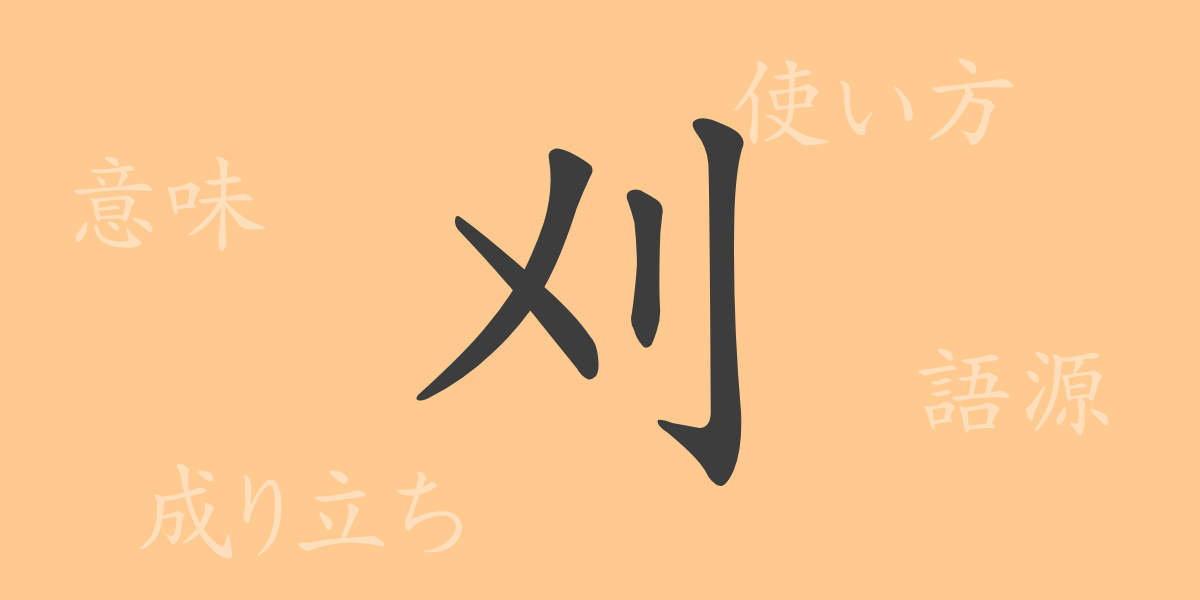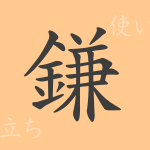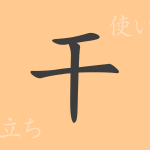The Japanese language is rich with a multitude of kanji characters, each with its unique history and meaning. “刈” ( Karu) is one of the commonly used kanji characters we often encounter in daily life, yet opportunities to delve deeply into its origin and usage are surprisingly rare. This article explores the allure of the kanji “刈” ( Karu), from its evolution to its meaning, usage, pronunciation, and even related idioms and phrases.
The Origin (Etymology) of 刈
The kanji “刈” ( Karu) is believed to have developed from a pictograph representing the act of cutting grass and trees. It originated from the depiction of harvesting and mowing in the fields of ancient China and has evolved over time to its current form. Understanding this visual background of kanji can serve as a clue to deepen our understanding of the characters.
Meaning and Usage of 刈
“刈” ( Karu) primarily means “to cut” or “to reap.” It is often used when harvesting crops, specifically referring to the act of cutting grains such as rice or wheat, as well as grasses and trees. Metaphorically, it can also mean to remove something or to bring something to an end.
Pronunciation, Stroke Count, and Radical of 刈
The kanji “刈” ( Karu) has several pronunciations, and their use varies depending on the compound or context.
- Pronunciation: The on’yomi (Chinese reading) is (がい – gai), and the kun’yomi (Japanese reading) is “か.る” (karu).
- Stroke Count: The kanji “刈” ( Karu) consists of 4 strokes.
- Radical: The radical of “刈” ( Karu) is “刂” (りっとう – ritto), which is a part that signifies a knife or blade and is commonly found in kanji that represent the act of cutting.
Idioms, Phrases, and Proverbs Using 刈 and Their Meanings
There are many idioms, phrases, and proverbs that include “刈” ( Karu), each with its unique meaning and nuance. Here are a few examples:
- “刈り取る” (karitoru): Literally means to harvest crops, and by extension, it can also mean to bring something to an end or to achieve a result.
- “刈り込む” ( karikomu): Primarily refers to the act of pruning plants or trees, but in a broader sense, it can also mean to reduce something.
- “刈り上げ” ( kariage): Refers to a hairstyle with the sides cut short, and more broadly, to the act of cutting something off or concluding something.
- “一刈り” (hitokari): Means to reap in one go, and the phrase “一刈りにする” (hitokarini suru) can also mean to process a large amount at once.
Conclusion on 刈
The kanji “刈” ( Karu), despite its simple structure, possesses a wealth of meanings and applications. From agricultural work to everyday conversations, as well as in idioms and proverbs, it is widely used in our lives. If through this article, you have been able to appreciate the history, culture, and depth of the language behind “刈” ( Karu), then it has achieved its purpose.

























